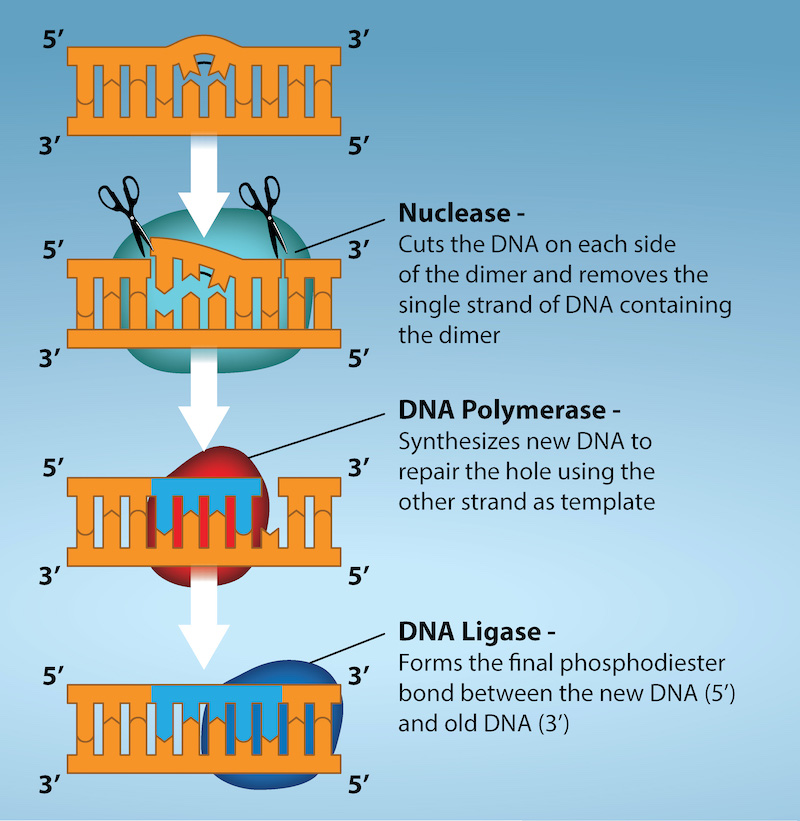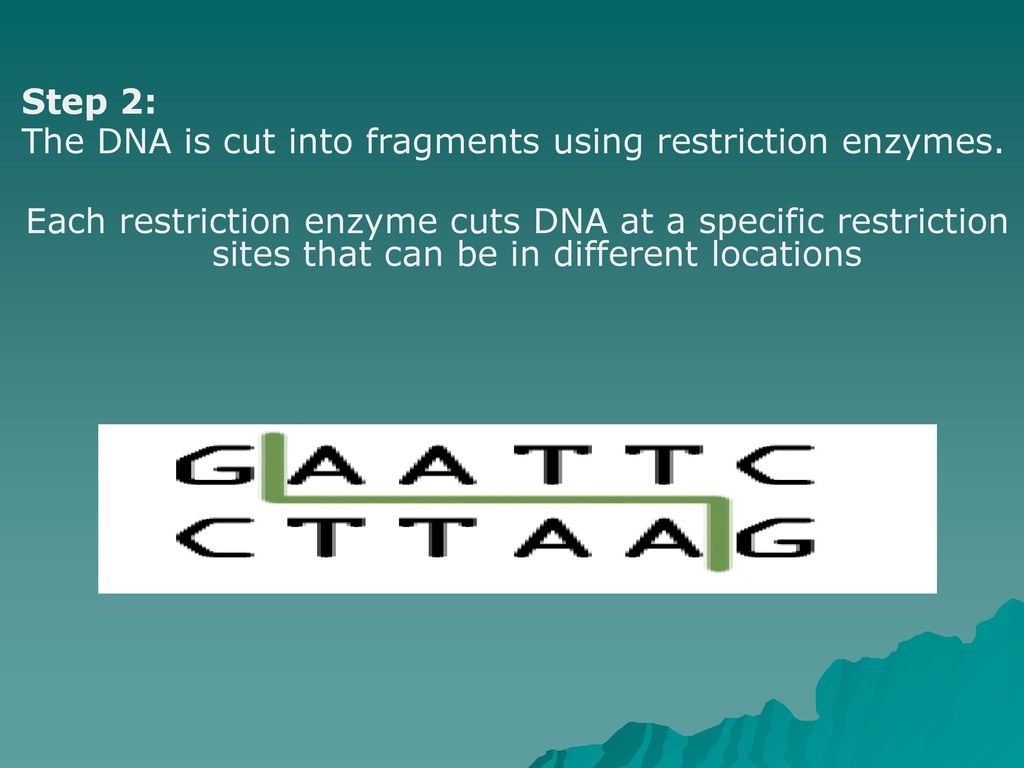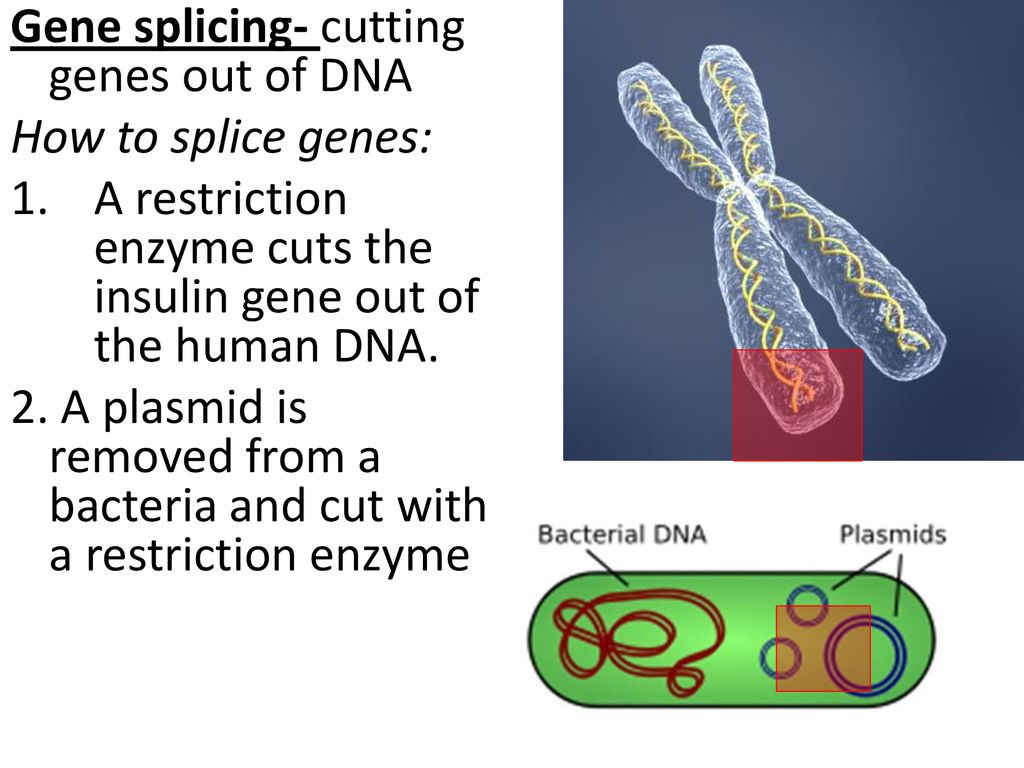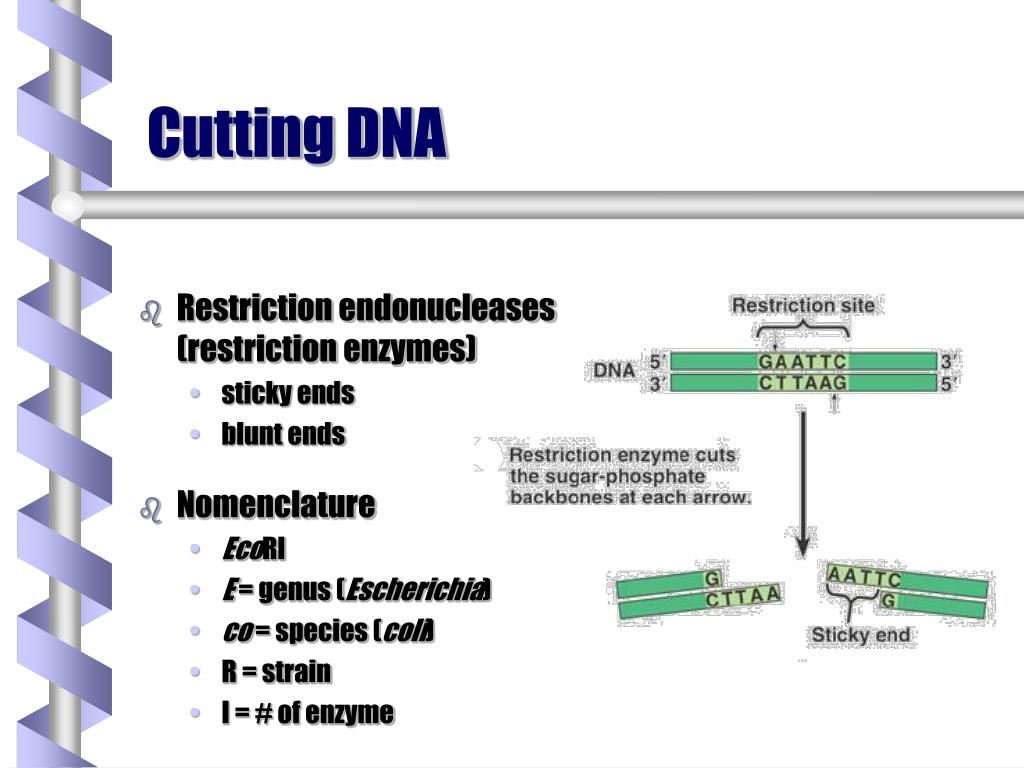Enzymes That Cut Out Damaged Sections Of Dna

Scientists have long been fascinated by the intricate mechanisms our cells use to maintain the integrity of our DNA. Now, a team of researchers has unveiled new insights into the workings of enzymes responsible for excising damaged sections of DNA, a process crucial for preventing mutations and diseases like cancer.
The discovery, detailed in a recent publication in the journal Nature Structural & Molecular Biology, sheds light on the complex choreography of these molecular repair tools. It offers a deeper understanding of how cells safeguard their genetic information, potentially paving the way for novel therapeutic interventions.
The Nucleotide Excision Repair Pathway
The spotlight of this research is the nucleotide excision repair (NER) pathway. This is a critical DNA repair mechanism that removes a wide range of bulky DNA lesions. These lesions, which can be caused by exposure to ultraviolet (UV) radiation, environmental toxins, or even normal metabolic processes, distort the DNA helix and interfere with replication and transcription.
The NER pathway involves a complex interplay of several proteins. Together, these proteins identify the damage, unwind the DNA around the lesion, cut out the damaged section, and then fill in the gap with the correct DNA sequence, using the undamaged strand as a template.
Key Players: Enzymes at Work
The new research focuses on the enzymes responsible for the incision step. The incision step is where the damaged DNA strand is actually cut on either side of the lesion.
Specifically, the study investigated the roles and interactions of the XPC, XPA, RPA, TFIIH, XPG, and XPF-ERCC1 protein complexes. These are crucial enzymes involved in recognizing, unwinding, and cleaving the damaged DNA.
Researchers from the National Institutes of Health (NIH) and the University of California, San Francisco (UCSF) collaborated on the project, utilizing advanced techniques such as cryo-electron microscopy to visualize the enzymes in action. The use of cryo-EM allowed the scientists to obtain high-resolution structures of the protein complexes bound to damaged DNA.
"Visualizing these enzymes at the near-atomic level provides unprecedented insights into their mechanism of action," said Dr. Emily Carter, lead author of the study and a researcher at NIH.
Unveiling the Molecular Mechanisms
The research team identified specific amino acids within the enzymes that are essential for their activity. They revealed how these enzymes interact with the damaged DNA and coordinate the incision process. The study also illuminated the conformational changes that occur in the enzymes as they move along the DNA and execute their repair function.
One key finding was the identification of a critical interaction between XPG and XPF-ERCC1. This interaction is essential for making the incisions on either side of the lesion.
By understanding these interactions, the scientists gained insights into the precise coordination required for accurate DNA repair.
Significance and Potential Impact
The implications of this research are far-reaching. Defective NER can lead to a variety of human diseases, including xeroderma pigmentosum (XP), a rare genetic disorder characterized by extreme sensitivity to sunlight and a high risk of skin cancer.
Understanding the molecular basis of these defects could lead to the development of new therapies to treat or prevent these diseases. “A better understanding of the NER pathway will help us design more effective strategies to prevent and treat cancer,” explained Dr. David Lee, a UCSF researcher involved in the study.
Furthermore, the new knowledge could inform the development of improved diagnostic tools. These could identify individuals at higher risk of developing DNA damage-related diseases.
Beyond cancer, the NER pathway plays a critical role in aging and neurodegenerative diseases. This is because the accumulation of DNA damage is a major contributor to cellular senescence and neuronal dysfunction.
Looking Ahead
The researchers are now focusing on investigating how other proteins involved in the NER pathway interact with the incision enzymes. The goal is to obtain an even more comprehensive understanding of the entire DNA repair process.
They also plan to explore how these enzymes are regulated and how their activity is affected by different environmental factors. This includes factors like exposure to pollutants and UV radiation.
Ultimately, this research holds the potential to revolutionize our understanding of DNA repair and pave the way for new and improved therapies for a wide range of human diseases. It reinforces the importance of fundamental research in unraveling the complexities of life and addressing critical health challenges.


















